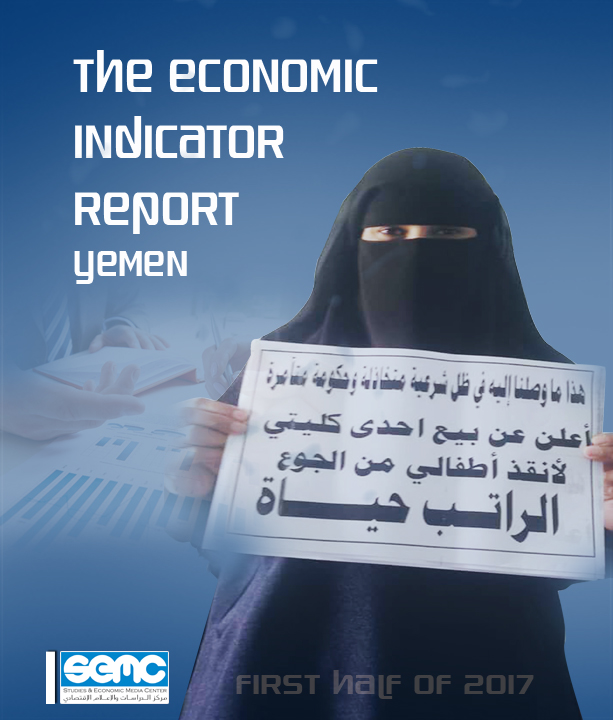Studies & Economic Media Center revealed , in its report on the economic indicators , the deterioration of the economic and humanitarian situation in Yemen during the first half of 2017, in light of the ongoing war and the lack of basic services such as electricity, water and food.
The economic situation in Yemen has not improved during the first half of this year because of the war in the country and the high rate of poverty to 85% of the population.
The report also pointed to the decline in the volume of food imports during the first quarter of this year by 22%, while the import of oil derivatives increased during the first quarter of this year, an increase of 103% compared to the first quarter of last year.
The report indicated the rise in the prices of food, oil derivatives and currency prices during the first half of this year, where the report monitored a rise of 35% in food prices compared to the first half of last year, while the average rise in food prices compared to pre-January of January 2015 to 60%.
The prices of oil derivatives (gasoline – diesel – domestic gas) increased during the first half of this year, by 19% compared to the first half of last year, while the rate of increase during the first half of this year 158% compared to pre – crises period .
Foreign exchange rates witnessed a significant increase against the Yemeni riyal during the first half of 2017, with the average exchange rate of the US dollar standing at 29% compared to the same period last year . The green buck rose 67% in this same period as opposed to the pre-crisis period.
The report pointed to the most prominent crises that hinder the growth of the economy in Yemen, including the liquidity crisis as one of the most significant economic challenges facing the country. This has further compounded the difficulties faced by the Yemeni banking sector, where Yemeni banks have failed to meet their obligations to their customers, and traders and importers resorted to exchange companies and the black market to buy much-needed currencies.
The non-payment of salaries has been one of the economic constraints in Yemen, especially in the areas controlled by al-Houthi group and its ally groups as well as in some government-administered cities districts , such as Taiz province, also the Yemeni banks face great difficulties in dealing with correspondent foreign banks. Some foreign banks have refrained from either dealing with local banks or providing them with facilities owing to the fact that Yemen has been designated as a high- risk zone
Also the central bank in Aden did not fulfill the required roles of managing monetary policy and supervising banks, as well as other tasks assigned to it , which was an added difficulty to the Yemeni economy ,in addition to the Difficulties in transporting goods and products
The health sector in Yemen has witnessed a significant deterioration since the beginning of the war. According to statistics, 300 health facilities have been destroyed or damaged, 65% of health amenities have become dysfunctional, while 14% operate at 50% of its original capacity . also Cholera has spread widely in Yemen, 1966 people died from cholera where 494,000 are suspected cholera cases till August 14 this year
The Studies and Economic Media Center (SEMC) is one of the most prominent Yemeni NGOs that works on , and spreads awareness of economic issues, in addition to buttressing good governance and public engagement in decision making, and working towards the creation of professional media
CLICK TO DOWNLOAD THE FULL REPORT

COMMENTS